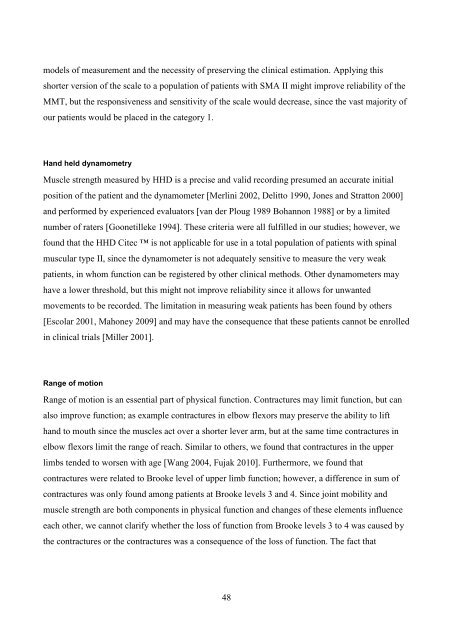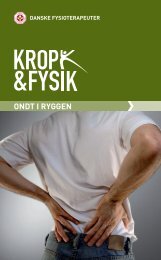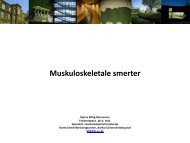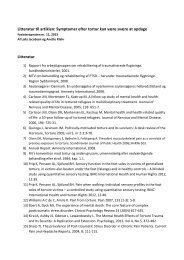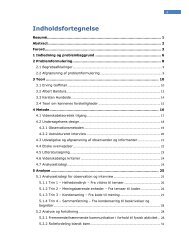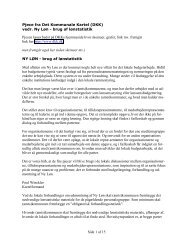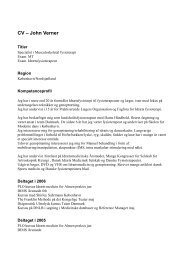Ulla Werlauff Methods to assess physical functioning - Danske ...
Ulla Werlauff Methods to assess physical functioning - Danske ...
Ulla Werlauff Methods to assess physical functioning - Danske ...
Create successful ePaper yourself
Turn your PDF publications into a flip-book with our unique Google optimized e-Paper software.
models of measurement and the necessity of preserving the clinical estimation. Applying this<br />
shorter version of the scale <strong>to</strong> a population of patients with SMA II might improve reliability of the<br />
MMT, but the responsiveness and sensitivity of the scale would decrease, since the vast majority of<br />
our patients would be placed in the category 1.<br />
Hand held dynamometry<br />
Muscle strength measured by HHD is a precise and valid recording presumed an accurate initial<br />
position of the patient and the dynamometer [Merlini 2002, Delit<strong>to</strong> 1990, Jones and Strat<strong>to</strong>n 2000]<br />
and performed by experienced evalua<strong>to</strong>rs [van der Ploug 1989 Bohannon 1988] or by a limited<br />
number of raters [Goonetilleke 1994]. These criteria were all fulfilled in our studies; however, we<br />
found that the HHD Citec is not applicable for use in a <strong>to</strong>tal population of patients with spinal<br />
muscular type II, since the dynamometer is not adequately sensitive <strong>to</strong> measure the very weak<br />
patients, in whom function can be registered by other clinical methods. Other dynamometers may<br />
have a lower threshold, but this might not improve reliability since it allows for unwanted<br />
movements <strong>to</strong> be recorded. The limitation in measuring weak patients has been found by others<br />
[Escolar 2001, Mahoney 2009] and may have the consequence that these patients cannot be enrolled<br />
in clinical trials [Miller 2001].<br />
Range of motion<br />
Range of motion is an essential part of <strong>physical</strong> function. Contractures may limit function, but can<br />
also improve function; as example contractures in elbow flexors may preserve the ability <strong>to</strong> lift<br />
hand <strong>to</strong> mouth since the muscles act over a shorter lever arm, but at the same time contractures in<br />
elbow flexors limit the range of reach. Similar <strong>to</strong> others, we found that contractures in the upper<br />
limbs tended <strong>to</strong> worsen with age [Wang 2004, Fujak 2010]. Furthermore, we found that<br />
contractures were related <strong>to</strong> Brooke level of upper limb function; however, a difference in sum of<br />
contractures was only found among patients at Brooke levels 3 and 4. Since joint mobility and<br />
muscle strength are both components in <strong>physical</strong> function and changes of these elements influence<br />
each other, we cannot clarify whether the loss of function from Brooke levels 3 <strong>to</strong> 4 was caused by<br />
the contractures or the contractures was a consequence of the loss of function. The fact that<br />
48


